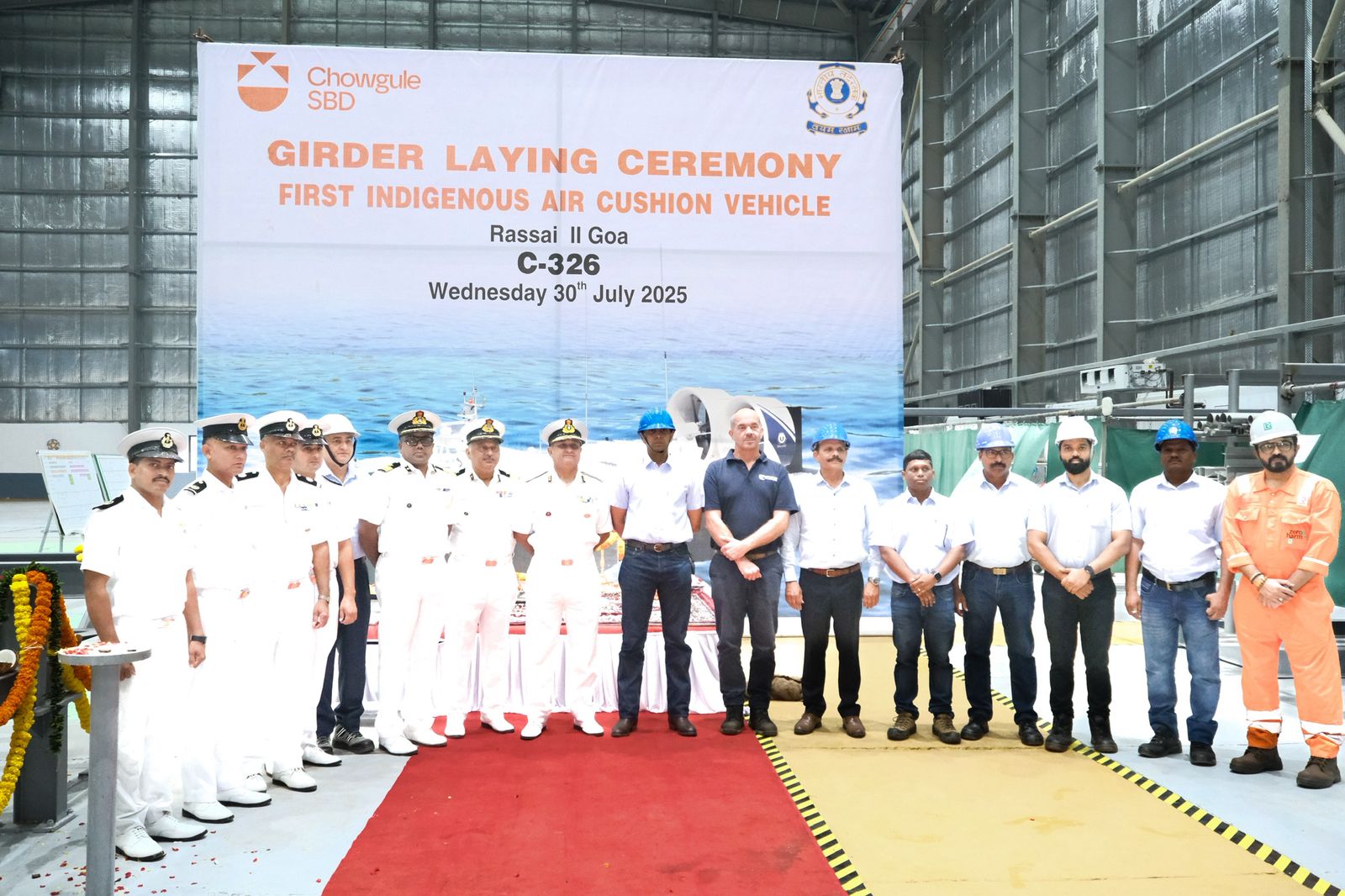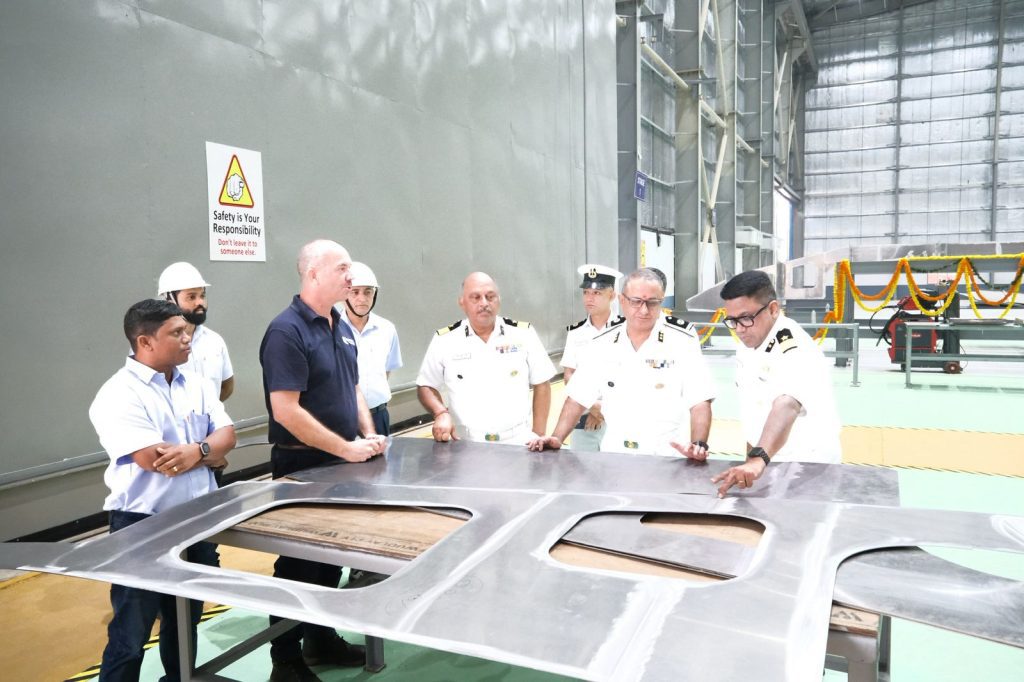In a step towards achieving self-reliance in defence, the Indian Coast Guard (ICG) has commenced construction of its first indigenously built Air Cushion Vehicle (ACV) at the Chowgule & Company Pvt. Ltd. shipyard in Goa. The girder laying and commencement of erection ceremony on Wednesday marked a key milestone in a contract signed with the Ministry of Defence on October 24, 2024, for a total of six such hovercraft.
The new hovercraft, based on proven Griffon Hoverwork designs, is being constructed with Indian expertise tailored for coastal security operations. Once inducted into service, these ACVs are expected to provide the ICG with enhanced speed, tactical flexibility, and shallow-water operability. These capabilities will enable swift responses for patrolling, interdiction, and search and rescue missions along India’s extensive maritime borders.
The hovercraft project aligns with the government’s Aatmanirbhar Bharat initiative, a drive toward operational self-reliance. This push for indigenous defence production was recently highlighted by Defence Minister Rajnath Singh, who noted a significant surge in the sector.
Singh said that India’s defence production has reached an all-time high of Rs 1.46 lakh crore, with a private sector contribution of over Rs 32,000 crore. Defence exports have also grown to a record Rs 24,000 crore in 2024-25.
The minister described the ‘Make in India’ initiative as crucial for the nation’s security and prosperity, citing the success of indigenous systems during Operation Sindoor as a testament to India’s defence capabilities. Furthermore, he announced that the execution model for the Advanced Medium Combat Aircraft (AMCA) program will, for the first time, allow the private sector to participate in a mega defence project alongside public sector companies, further bolstering the nation’s indigenous defence industry.











